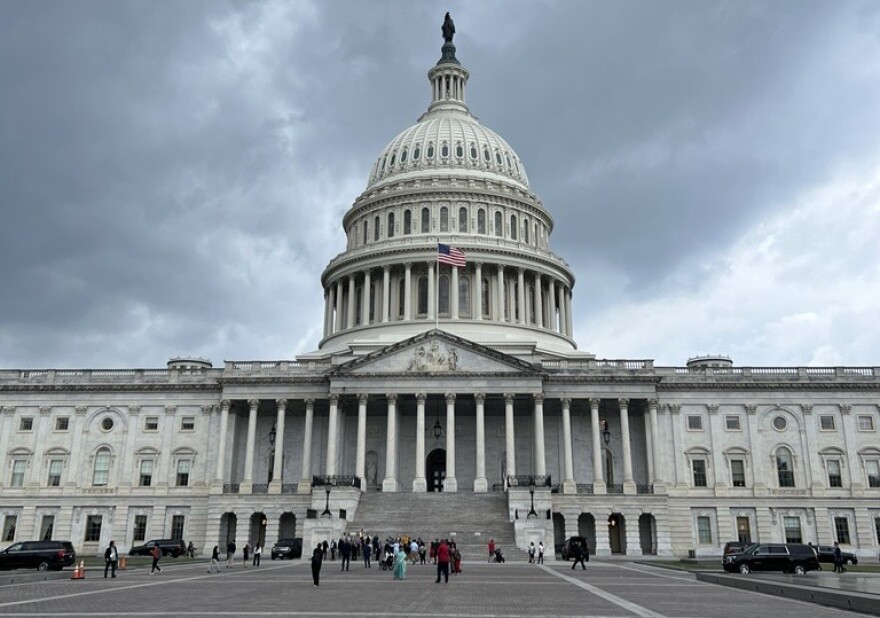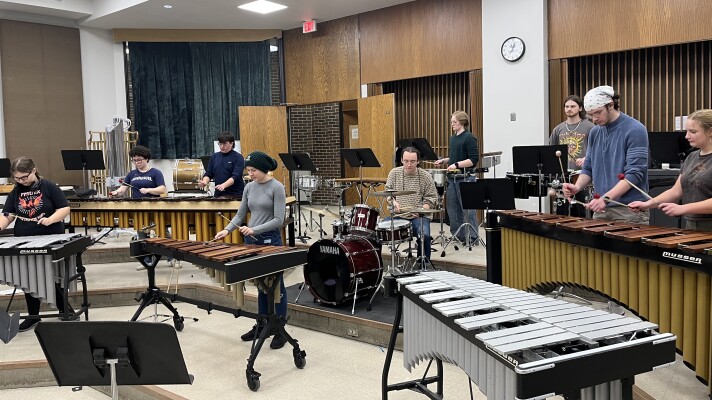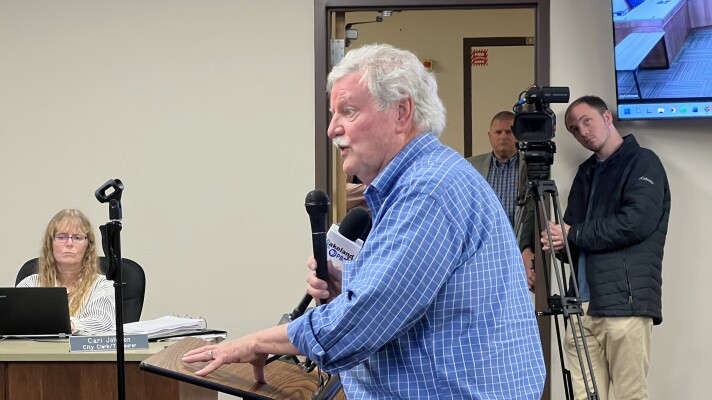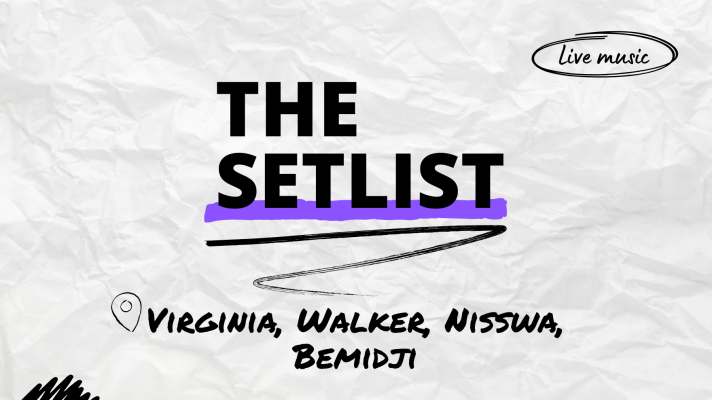The United States government has entered a shutdown, meaning many federal agencies have had funding cut off and are furloughing workers. For Indian Country, this is a violation of dozens of different treaty obligations with no clear end in sight.
“I think every tribe is in the same boat, everything is very underfunded already so it’s just gonna get skinnier,” said Boyd Gorneau, chairman of the Lower Brule Sioux Tribe in central South Dakota. “You don’t know what’s gonna come next.”
The shutdown is the result of a failure for Republicans and Democrats to agree on passing a new funding bill. Both chambers of the U.S. Congress is controlled by Republicans, but the U.S. Senate is short of the 60 votes needed to pass the 2026 spending bill.
Spending lapsed at midnight, marking Oct. 1 the first day of the shutdown.
Several Democrats are refusing to pass the Republican-introduced spending bill unless it restores cuts to Medicaid made in President Donald Trump’s so-called “big, beautiful bill” and by extending permanently the subsidies for people who use the Affordable Care Act. It’s also known informally as “Obamacare.”
Democrats also oppose cuts to spending for the Centers for Disease Control and Prevention and National Institute of Health. Republicans, such as President Trump and Vice President J.D. Vance claims the proposed healthcare expansion would go to undocumented immigrants, though that isn’t entirely true.
Undocumented immigrants are not eligible for federally funded health benefits like Medicare and Medicaid. Medicaid may be used to help cover emergency care at hospitals for undocumented immigrants who would otherwise qualify for Medicaid, but this is not considered health insurance.
Impacts will vary
The shutdown is already having real world consequences, roughly 750,000 federal workers are furloughed and many are unaware if they’ll get their jobs back as President Trump has warned this shutdown could come with permanent layoffs. Most essential workers will continue to work without pay.
For Indian Country, several services may be affected, especially depending on the length of the shutdown. The previous shutdown in 2019, during President Trump’s first term, was the longest in history at 35 days.
Impacts will also vary depending on the available reserve funds held by the 574 different tribal nations, meaning every tribe is impacted differently.
For a lot of services and tribes, it’s too early to tell exactly how far reaching the impact of the shutdown will be. Several tribes and tribal programs have spoken out about perceived impacts moving forward.
“We're hoping that we will be able to come out of this unscathed,” said OJ Semans, executive director of the Coalition of Large Tribes, an advocacy group for large land-based tribal nations that exceed 100,000 acres. “But like anything else, you have to go a few days to see if there's any sand in the gears.”
Across the board, critical tribal housing programs could be impacted for many tribes, according to a statement from the National American Indian Housing Council, a national housing and community development organization for Native people across the country.
For tribes with available reserves, there won’t be much of an impact. However, tribes without reserves will not have that same cushion. For those programs, delayed disbursements or the absence of the Department of Housing and Urban Development employees to provide assistance, process requests or oversee grant programs can halt services and construction projects.
“The shutdown timing is particularly disruptive as HUD’s Office of Native American Programs has active competitive funding opportunities, including the Indian Housing Block Grant Competitive and Indian Community Development Block Grant programs,” said Rudy Soto, the housing organization’s executive director in an Oct. 1 statement. “If HUD staff are unavailable to manage deadlines or awards, Tribal communities depending on these funds will suffer.”
The Smithsonian Museum of the American Indian located in Washington, D.C., will close for the duration of the shutdown beginning on Oct. 6, the museum shared in a Facebook post. All of the Smithsonian museums will close.
National Parks are also going to be impacted, many parks visitor centers will go unstaffed for the duration of the shutdown and while they’re open it may not be safe to visit.
Just under half of Department of the Interior Bureau of Indian Affairs employees will be furloughed, according to the September 2025 BIA contingency plan.
BIA operated law enforcement and detention centers, social services child and adult protection, tribal government operations and emergency energy production will remain open per the contingency plan and carryover funding will be used if available.
Non-appropriated funding sources available for irrigation and power and non-lapse funding is available for some transportation programs. The BIA’s Wildland Fire Program is funded with non-lapsing funds and carryover if available, meaning it will also continue.
Unaffected services
Notably, the Indian Health Service will remain unaffected. IHS stated in a Facebook post on Oct. 1. Services remain functional due to advance appropriations for the fiscal year 2026, which means IHS can operate business-as-usual during the course of the shutdown.
Social Security, the Supplemental Nutrition Assistance Program, Medicare, the United Postal Service and Veterans Healthcare services will also remain open.
BIA tribal police agencies will remain operational as essential services. However, BIA officers will receive their paychecks until the shutdown ends.
Tribes like the Lower Brule Sioux Tribe, where nearly all land is leased to tribal members and tribal organizations, could experience delays in leased land payments from the Interior department, Gorneau said, but the payments will come.
The Interior department bills ranchers using the lands, ranchers pay the bill on what they lease and then the department processes the funds and sends those funds to land holders, Gorneau said.
“I guess we’ll survive on our own but our tribe needs that money as well as the folks with those land holdings,” Gorneau said. “It’s something they expect every year.”
The Navajo Nation Council said in an Oct. 1 statement that its services overall will remain mostly unaffected. The tribe said the following services will continue unaffected: transportation, wildland fire management, tribal government, emergency energy production, budget formulation, law enforcement and detention centers, social services and irrigation power and dam safety. Many of these services will continue to operate through the use of reserve funds.
“As the shutdown continues, the Navajo Nation Council will closely monitor the situation to assess impacts to federal services and programs that directly affect Navajo citizens. More updates will be provided to the Navajo people as quickly as possible,” stated Speaker Crystalyne Curley in the email.
The Port Gamble S’Klallams Tribe off the Washington coast also said it will remain unaffected, with few to no impacts from the shutdown, tribal leaders said in an Oct. 1 Facebook post.
Planning for an uncertain future
Organizations that oversee the needs of several tribes, such as the Coalition of Large Tribes, said they took steps in the weeks leading up to the shutdown to ensure their member tribes would be protected, Semans said.
“We kind of had a feeling that this was going to happen,” he said. “So we’ve been working with the (Interior department) and BIA along with (the Department of Health and Human Services) on ensuring that they have people assigned to distribute the treaty obligation funds from the government to the tribes as of midnight.”
Semans said the 27 member tribes in the advocacy group have drawn down money through the Interior department and BIA, which can last for 30 days. However, money can only be drawn down every three days from HHS which oversees childcare and Head Start.
Semans said the Coalition of Large Tribes has been in contact with Health Secretary Robert Kennedy’s senior policy advisor to ensure protection.
“Right now we have been working very hard to ensure that the tribes will still get their treaty obligated funds,” Semans said. “And it looks like it's working so far, but really we're not going to be able to tell until maybe a week from now.”
This article first appeared on ICT and is republished here under a Creative Commons Attribution-NoDerivatives 4.0 International License.














































